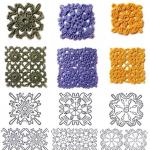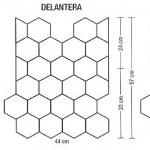Lesson on the fairy tale Mitten in the middle group. Lesson summary on the folk tale “Rukavichka” using ICT
Summary of a lesson on theatrical activities fairy tale “Mitten”.
Stepper toy theater
"Teremok"
dramatization game
Target: participate in joint games, depict the characteristic behavior of the characters.
Tasks: Be able to depict the habits of animals. Know who is screaming.
Cultivate friendly relations and be able to act in concert. To foster interest in theatrical activities, evoke an emotional response, and a desire to participate in dramatized games.
Develop children's dialogical speech.
Equipment: simple decorations, toys, a mitten, a house-teremok, masks-caps.
Characters: presenter, grandfather, mouse, frog, hare, fox, wolf, boar, bear, dog.
"Mitten": All roles are performed by the teacher.
"Teremok": The presenter is a teacher, the characters of the fairy tale are children.
Progress of the lesson:
Teacher: in a quiet mysterious voice he says: “now you and I will go to a fairy-tale forest to a magical clearing, and you will see what happens next. Take your seats in the carriages (we line up one after the other, our train is leaving: “Chuh-chukh-chukh-chukh! The train rushes at full speed!”
We walk like a train through the group and approach the chairs.
Educator:
So we arrived at the fairy forest. How interesting it is here! Guys, sit down on the stump chairs.
Children sit on chairs.
Educator:
Shows the hand on which the mitten is worn and reads N. Sakonskaya’s poem “Where is my finger? »
What a warm little house for your fingers! Show me how many of them you have?
Children show their palms.
Educator: So many fingers and they all fit into a small mitten. And if a finger, like Masha’s, gets lost, it will still end up in the mitten with the rest of the “friends” fingers.
Children, what do we put the mitten on?
Children: on hand.
Educator: That's right, on hand. Therefore, a mitten can be called a mitten. Do you want to get acquainted with the fairy tale called “The Mitten”?
Children: yes, we want!
Educator: Then sit back, watch and listen!
The grandfather was walking through the forest, and a dog was running after him. Grandfather walked and walked, and lost his mitten.
Educator asks the children: “Children, look, what is this? (Showing the mitten)
Children: mitten.
Educator: Whose mitten is this? Maybe yours? I name the children's names)
Children: No, not our mitten, grandpa lost it!
Educator: That's right, big mitten! Now his hands are frozen. What to do? We need to call grandpa!
Children ovut grandfather.
Educator: Grandfather must have gone far away and can’t hear. Well, let's put the mitten in a visible place.
The teacher places the mitten on the table.
Educator: “How quiet it is in the forest. Oh, someone is close here, the leaves are rustling. Yes, it's a mouse running! (Imitates the squeak of a mouse in his voice).
He asks the mouse (toy): “What did you like about the mitten? »
Mouse (teacher): yes, I will live here!
Educator: This clever girl hid from the cold, should we let her live here?
Children: yes, we will allow it!
(I put the mouse in the mitten)
Educator: Children, who is that slapping its belly on the ground?
Children: it's a frog!
Educator(on behalf of the frog): Who lives in a mitten?
Mouse: I’m a little mouse, and who are you?
Frog: I am a croaking frog, qua-qua-qua, let me into your house.
Mouse: go.
Educator: Now whose jumping can you hear in the forest?
Children: it's a bunny!
Educator: Yes, it's a bunny running! I also saw the mitten.
Bunny: who lives in a mitten?
Mouse: I'm a little mouse.
Frog: I am a frog, and who are you?
Bunny: I'm a runaway bunny. Let me live with you!
(I put the bunny in my mitten.)
Educator: And who is it that runs so lightly, covering its tracks with its tail?
Children: Fox!
Educator: The fox noticed the mitten and asked: who lives in the mitten?
Mouse: I'm a little mouse.
Frog: I am a frog frog.
Bunny: I am a runaway bunny. And who are you?
Fox: And I'm a little fox-sister. Let me in too.
Educator: Shall we let the fox in?
Children: Yes!
Educator: Who else is running there? Yes, this is a wolf-wolf with a gray tail,
Wolf: Who lives in a mitten?
Mouse: I'm a little mouse.
Frog: I am a frog frog.
Bunny: I'm a runaway bunny.
Fox: I'm a little fox-sister. And who are you?
Wolf: Yes, I’m a gray barrel top, rrr. Let me go.
Educator: Let him in, little animals, he’s too cold. And he will not offend you!
I hide the wolf in my mitten.
Educator: There are so many of you! And the mitten seemed to have stretched out. Listen guys, someone is running. That’s right, he also wants to find a house for the winter. Yes, it's a boar!
Boar: oink-oink-oink! Who - who lives in a mitten?
Animals: mouse-norushka, frog-frog, bunny-runner, little fox-sister, top-gray barrel. And who are you?
Boar: I am a tusker boar, I dig the ground with my snout, I get tasty roots, I feed everyone.
Educator: They let in the animals and the wild boar. Oh, how the branches are cracking, surely the bear is coming.
Bear: Who lives in a mitten?
Animals: mouse-norushka, frog-frog, bunny-runner, little fox-sister, top-gray barrel, boar-tusk. And who are you?
Bear: And I am Father Bear. Let me go.
Animals: Where will we let you go? And so cramped!
Educator: In crowded but not mad! Let Mishka warm up!
(I put the bear in my mitten.)
I see grandpa returning with his dog.
Grandfather: Where is my mitten? Look for it, my friend!
Children, where is my mitten?
Children: Here she is!
Educator pours the little animals out of the mitten and gives it to his grandfather, the little animals run away.
Educator: Come and visit us, little animals, there’s enough room for everyone, right, guys?
Children: Come, come!
Educator: Did you like the fairy tale?
Children: I liked it!
Educator: What kind of fairy tale is the fairy tale “Rukavichka” like?
Children: To "Teremok".
Educator: Well done! Of course to Teremok
Do you want to be artists and show the fairy tale “Teremok”?
Children: Yes, we want!
Educator: Then let's go to the forest theater!
Physical education minute“Chauffeurs” (imitate movements)
We're going, we're going, we're going, we're going,
Press the pedal
We turn the gas on and off.
We look intently into the distance.
The wipers clear away the drops
Left-right - cleanliness.
The wind ruffled my hair.
We are drivers anywhere!
Educator: Here we are.
At the request of the children, we choose characters from the fairy tale. We put on hats and masks.
Educator: You will be our artists, and the rest of the children will be spectators.
The artists will show a fairy tale, and the audience will then applaud you.
I stand near the house - Teremka and begin to tell:
“There was a tower in the field. He is neither short nor tall. A small mouse ran past.
I invite the girl Mouse. How does the mouse squeak?
Child: pee-pee-pee.
Praise: Well done!
Knock on the little house and ask: Who lives in the little house?
The child knocks on the house and asks:
Who lives in the house?
Educator: There is no one, go into the house, you will live there.
I invite the child “frog”: Show how the frog jumps and croaks.
The child jumps and croaks.
Educator: Knock and ask: “Who lives in the little house? »
The child knocks on the little house and asks: Who lives in the little house?
Educator: “Answer the frog, little mouse.
Child-mouse: I am a little mouse, and who are you?
Frog child: I am a frog frog. Let me into the little mansion.
Mouse: Go.
Educator: A bunny ran past - a runner. I invite a child - a “bunny”. Show how the bunny jumps, what kind of ears does the bunny have? Knock on the little house and ask who lives in the little house?
The child jumps on two legs and shows the bunny ears on his head with his hands. He knocks on the house and asks: Who lives in the house?
Children answer: Mouse-norushka, frog-croak. They ask: Who are you?
Child: I'm a runaway bunny. Let me go.
Enters the house.
Educator invites the “fox” child: Show how the fox runs. She is cunning.
The child portrays a fox.
Educator: Knock on the mansion and ask who lives there?
A child - a “fox” knocks on the house and asks: “Who lives in the little house”
Children answer: mouse-norushka, frog-frog, bunny-runner, and who are you?
The child is a “fox”: I am a little fox-sister. Let me into the little mansion.
Enters the house.
I invite a child - a “wolf”: how does a wolf run? The child pretends to be a wolf.
Educator: knock on the little house, ask who lives in the little house?
The child knocks on the little house and asks: Who lives in the little house? Let me go. Enters the house.
I invite the “bear” child. Show how the bear walks, the bear is clubfooted and waddles. Go to the house and ask who lives there?
The child walks, imitating the movements of a bear. He knocks on the little house and asks: Who lives in the little house?
Children answer: little mouse, frog frog, bunny - little runner, little fox - little sister, top - gray barrel. And who are you?
Child: I'm a bear. Let me go.
Children: No, we won't let you in!
Educator: Knock on the little house harder, bear. I begin to rock the house. Run, run away, animals, otherwise the bear will break the whole house.
Children leave the house and sit on chairs.
Educator: Well done, artists! Let's clap our hands for them!
Did you like the performance?
Children: Yes!
Educator: IN next time we will switch roles. Our artists will be spectators, and the spectators will be artists.
And now it’s time for us to return from the magical forest to kindergarten. Take your seats in the carriages, our train is leaving.
Children walk in a group one after another.
Educator: “Chuh-chukh-chukh-chukh, the train is rushing at full speed!
Children: Tu-tu, tu-tu.
Program content:
1.Form a positive attitude towards a fairy tale, teach to respond emotionally to what is happening.
2. Maintain the desire to play with a fairy tale, show interest in dramatization, and master its elements.
3. Teach children to correlate play actions and expressive movements with words (speech in motion)
4. Teach children to understand and remember short poems, nursery rhymes, sayings and fairy tale endings.
5. Strengthen children’s ability to recite poetry with their hands.
6. Work on speech breathing, voice, expressiveness of speech.
7. Cultivate a friendly attitude towards animals, the ability to play together.
Material for the lesson:
Fairy tale "Ryaba Hen" (dolls-toys), mitten toy for dramatization, masks, ponytails with elastic bands for dressing up.
Tree toys to depict a forest.
Preliminary work:
1. Acquaintance with the fairy tales “The Pockmarked Hen”, “The Mitten” in classes on speech development, other types of activities and the use of fairy tales in independent play.
2. Showing interest in dramatization, dressing up, mastering the elements of dramatization.
3.Development of the ability to correlate play actions and expressive movements with words.
4. learning short poems, nursery rhymes, poems with movements.
5.Learning the outdoor game “Bear and Bunnies” with words.
Progress of the lesson:
Educator: “Children, today we will go to visit fairy tales.
On a smooth path,
One-two-one, one-two-one
On a smooth path,
Our legs are tired.
we are gulli, gulli, gulli
So we found a fairy tale!”
(The fairy tale “Ryaba Hen” is prepared on the carpet - dolls - toys, knitted theater.)
Children sit down on the carpet, listen and tell a story together with the teacher.
The ending of the fairy tale: “They began to live and live and make good things!”
Educator: “We had a good time visiting the fairy tale, but we need to move on”
Educator: “It’s winter now, there’s a lot of snow, look at the snow slide!”
Telling poems with your hands:
"And on the hill there is snow, snow,
And a bear sleeps under the hill.
Quiet, quiet, don't make noise!"
Educator: “Children, let’s go longer.
"We are walking through snowdrifts,
Raise your legs higher.
We walked for a very long time,
Our little legs are tired!" (study on the expression of basic emotions)
Educator: “Children, we came to the forest.
Hello forest,
Wonderful forest,
Full of fairy tales and miracles!" (work on voice)
Children find a mitten in the snow.
Educator: “Children, whose mitten do you think this is? Who lost it? What is the name of the fairy tale about grandfather and the mitten? Let’s play such a fairy tale!” (dramatization of the fairy tale “Mitten”)
Educator: "Clever fairy tales and charm
They live next to us,
A fairy tale is here, and a fairy tale is here!
Outdoor game "Bear and bunnies"
Educator: “Brave bunnies walked through the forest,
Brave runaway bunnies.
And the bear was sleeping in the den.
The bunnies ran closer
The bunnies sang quietly:
"Hey little darling, get up
And chase the bunnies!"
Children pronounce words and perform movements in accordance with the words.
Educator: “And the bear lies silent,
Does not say anything.
The bunnies ran closer
The bunnies sang loudly,
"Hey, little darling, get up,
And catch up with the bunnies!"
"And the bear growls,
And how he runs after the hares:
“Yeah, we got caught, we finished the game!”
Children: "Teddy bear, darling, forgive me,
Bear, bear, let go!
The game is repeated 2-3 times!
Alfiya Adelshina
Summary of GCD on speech development in middle group“On a visit to the fairy tale “Rukavichka”
Summary of educational activities for speech development in the middle group
"IN guests to a fairy tale« Mitten"
Target: Develop children's coherent speech.
Tasks:
Educational:
Teach children to answer in complete sentences.
Teach children to draw a pattern - decorate mitten,
To consolidate and expand children's understanding of the peculiarities of animal life.
Developmental:
develop connected speech;
Develop creative abilities of children.
Develop ability to use in speeches and choose adjectives.
Develop children’s ability to name the qualities, signs and actions of animals.
develop curiosity, memory and thinking of children;
develop visual perception.
Educational:
Foster respect for animals;
To promote the development of a culture of communication with adults and peers, the manifestation of emotional responsiveness
Foster a caring and caring attitude towards animals.
Cultivate an interest in fiction.
PRELIMINARY WORK:
Examination of illustrations, reading poetry, riddles, posing a problematic question, conversation.
Material and equipment: Mitten; magnetic board; wild animal toys; pencils, felt-tip pens, wax crayons, blanks mittens for coloring, samples.
Vocabulary work: The hare is small, cowardly, long ears, fast legs, gray coat. The wolf is angry, toothy, growls. The bear is large, gloomy, with a rough, low voice. The fox is red, has a fluffy tail, cunning, crafty, ate it, it’s a pity.
Integration of areas: Cognition. Communication, Artistic creativity, Socialization.
Planned results:
Interest in fairy tales;
Understanding the need for correct posture while drawing to maintain good posture;
development creativity children.
Methods and techniques:
1. Organizational moment
mittens.
4. Didactic game: "Call me kindly"
5. Solving the riddle
6. Didactic game: "Who will say more words"
7. Outdoor game: "Fox - sister"
8. Productive activity "Decorate mitten with a beautiful pattern»
Progress of the lesson:
Activities of the teacher. Children's activities.
1. Organizational moment
Hey guys, don't be lazy!
Get into the circle quickly.
On the right is a friend and on the left is a friend,
Let's smile to everyone around us!
Attracting children's attention. As a rule, most children immediately become interested in what is happening.
2. Surprise moment– appearance mittens
There's a big beautiful one lying on the floor mitten.
Educator: - Guys, what is this? Children pick up and look mitten.
Educator:
That's right mitten.
Whose could it be? mitten?
Lera maybe this is yours mitten? (You can ask several children).
Guys, I think this is fairy tale mitten?
Do you know a fairy tale about a mitten?
Children notice mitten, look at it and answer the teacher’s questions. Activate the necessary knowledge
Who lived in mitten from a fairy tale? (mouse, frog, fox, bunny, wolf, bear)
Let's see who lives in our mitten? (Hare)
Look what a bunny? Like a bunny fairy tales are called? Why? (Children's answers)
Analyze, Gradually most of the children become involved.
4. Didactic game "Call me kindly"
Call him affectionately. (Bunny, bunny, bunny, bunny)
Who else lives in our mitten? (Mouse)
What kind of mouse? And in what other there lives a mouse in fairy tales? ("Chicken Ryaba", "Teremok", "Turnip").
Means activation of cognitive activity
5. Solving the riddle
Who else lives in our mitten, you'll know when you guess it right riddle:
Gray, scary and toothy.
Caused a commotion.
All the animals ran away.
Scared the animals...
(Wolf)
How do they talk about a wolf? fairy tales? (top - gray barrel). Why is it called that?
Who else lives in our mitten? Who is this? (Bear) The teacher takes out bear mittens.
Listen to the riddle. Express their opinion.
Development free communication with adults and children, development of attention, thinking.
6. Didactic game: "Who will say more words"
Guys, only our bear is very sad. Let us tell the bear what he is like and what he can do, what his character is. Pass the bear to each other and tell about it. ( Bear: brown, clubfooted, smart, sad, angry. His fur coat is fluffy. He knows how to fish, climb trees, and in winter he sleeps in a den. Bear loves There is: honey, berries, fish).
The teacher draws the children's attention to the fact that the bear must be handed over carefully and not offended.
Who stayed in our mitten? What animals have we not talked about yet? (The Fox and the Frog)
That's right, guys. We know an interesting game about the Fox and the Frog. Do you want to play it? Who will tell us how to play this game? They actively interact and activate their thought processes.
They activate the necessary knowledge and actively interact. Express judgments.
If the child's answer is incorrect, the children correct the error by giving the correct answer.
7. Physical training minute. A game "Three Bears"
Like our animals
Like our animals (Clap your hands.)
Paws are knocking merrily:
Top-top-top, top-top-top. (Stamping feet.)
And my legs are tired,
Hands clap:
Clap-clap-clap, clap-clap-clap. (Clap your hands.)
And then squat down (Squats.)
Animals dance nearby. (Jumping in place.)
And how they start to run - (Running in place.)
No one can catch them. Children perform motor movements indicated in the text.
Now let's remember what started fairy tale« Mitten» (Grandfather lost mitten)
Who came to first mitten? (mouse)
Who came second? mitten? (Running Bunny)
Who is the third one who came running to mitten? (Little fox sister)
Who came fourth? mitten? (Jumping Frog)
Who was the fifth to come running to mitten? (The top is a gray barrel)
Who came last mitten? (Bear-father)
How did it end fairy tale« Mitten» (Grandfather saw what he had lost mitten and went to look for her. The dog helped grandfather find mitten. The animals got scared and ran away).
Guys, does this mean the animals are left without a home? What to do? (Children's answers)
Let us help our animals and make them homes. I have these mittens, but they are white, not beautiful. Animals won't like them. We can decorate mittens with beautiful patterns.
Educator: I'll paint a big one mitten, and here you are, smaller ones, so that the rest of the animals can have their own houses.
The children are talking.
Activate thought processes.
They put forward their thoughts.
8. Productive activity: "Decorate mitten with a beautiful pattern»
Children coloring mittens.
Educator: So beautiful we got the mittens! Now our heroes must like them. When they dry, we will give them to our animals.
Bottom line: Well done! You did a good job today!
From what fairy tales were there any animals we helped today?
What animals lived in mitten?
Now let's wash our hands because they got dirty when we worked with paints.
Activate creative thinking. Formation of technical skills in the process productive activity (drawing) in children.
GCD for the development of coherent speech, using the modeling method in the middle group.
"Retelling of the Ukrainian folk tale"Mitten"
Software tasks:
to develop in children the ability to emotionally perceive the content of a fairy tale, to remember characters and sequence of actions, thanks to the modeling method;
develop memory, logical thinking, figurative speech;
practice word formation;
consolidate the concept of sensory standards;
develop fine motor skills;
cultivate moral qualities;
develop speech initiative, speech independence, communication skills.
Vocabulary: Activate words and expressions in speech: Bureau, scratching mouse, jumping frog, runaway bunny, little sister fox,
The top is a gray barrel, the boar is a tusker, the bear is father, the proverb “In crowded conditions, but not in offence”
Equipment: Finger theater “Rukavichka”, depicting fairy tale characters, mittens, sets of circles for each child of different colors and sizes, strips for modeling a fairy tale.
Previous work: Reading a fairy tale, watching a cartoon. looking at illustrations.
Progress of the lesson:
Children welcome guests:
All the children gathered in a circle
I am your friend and you are my friend.
Let's hold hands tightly
And we will smile at our guests.
Hello, guests!
Educator: Guys, I want to tell you a story. I have a girl friend Masha. And she can be so absent-minded.
Dressing for kindergarten - lost dress.
And not on the chair,
And not under the chair,
Not on the bed
Not under the bed.
This is Masha-
Masha is confused.
Are there such confused Masha among you? (Answers)
And I know that sometimes in our group there are confused Mashas.
And therefore, today we open the “Lost and Found Bureau” (Approach the “Lost and Found Bureau”) a box with the inscription.
Guys, why do you think such a bureau is needed? (Answers)
That's right, our “Bureau” stores lost things that are waiting for their owners.
The teacher opens the box and takes out a hat.
Educator: The hat is kept in our Lost and Found Office. What color is it? (answer), what is it made of? (knitted from threads). Who is the owner of this hat?
Then he takes out the typewriter, soft toy, the ball, asks questions and finds the owners, the last one takes out the mitten.
Educator: What is this? (Mitten). What else can you call it? (Mitten)
Listens: Yes, it’s not simple. Some voices come from it. The teacher looks into the mitten. Guys, someone is sitting in the mitten.
Want to know who?
Game "Guess the riddles"
The teacher asks the children riddles.
After each guess, the teacher takes out the animal and puts it on the table.
Sits in a hole, eats a crust of bread. (Mouse)
The little animal is jumping
Not a mouth, but a trap.
Will fall into a trap
And a mosquito and a fly. (Frog)
What kind of forest animal
Stood up like a post under a pine tree,
And stands among the grass
The ears are larger than the head. (Hare)
Red-haired, thief, guilty before everyone? (Fox)
Grayish, toothy, prowling through the forest, looking for sheep and calves. (Wolf)
This beast with two fangs
With very powerful legs
And with a cake on the nose.
He digs earth in the forest. (Boar)
He sleeps in a den in winter
Under a huge pine tree,
And when spring comes -
Wakes up from sleep. (Bear)
What fairy tale do you think these heroes came to us from? (Answers)
Right. From the fairy tale "Mitten"
Selection of adjectives for the heroes of the fairy tale.
Let's look at the screen and talk about the heroes of this fairy tale.
Pictures of animals appear on the projector screen.
What a mouse: gray, small, soft, nimble.
What kind of frog is it: green, cold, slippery, wet.
What a bunny: white, fast, oblique, cowardly.
What a fox: red, fluffy, cunning, soft, beautiful.
What kind of wolf is it: gray, big, toothy, scary, angry.
What a boar: big, angry, fanged.
What kind of bear is it: big, club-footed, brown, fat.
Well done boys.
Now, let's tell this tale.
Choose your hero. (Children choose a hero, put it on their finger) And so, the fairy tale begins.
Children, together with the teacher, retell the fairy tale in roles.
The teacher shows illustrations on the projector as the story is told.
Educator: Well done, well told, let's return the animals to their house. Even though the mitten is small, the animals live in it together and do not quarrel. In crowded but not mad. You are also friendly, cheerful guys, join the circle as soon as possible.
Physical education minute. "Girls and boys"
Girls and boys: clap, clap, clap
They jump like balls: jump-jump, jump-jump.
They trample with their feet: stomp, stomp, stomp.
They laugh merrily: ha, ha, ha.
Eyes blink (rhythmic closing of eyes)
Afterwards they rest (sit on pillows).
There is a knock on the door. Grandfather comes in. Children meet. They say hello.
Grandfather: Hello. Have you opened a “Lost and Found”?
Educator: Grandpa, have you lost something?
Grandfather: I was walking through the forest and lost my mitten. And now I don’t know what to do, because it’s winter outside, it’s freezing.
Educator: We found your mitten. (Show)
Grandfather: Wow, well done, thank you guys.
Educator: But we can’t give it to you now. Animals live there.
Grandfather: How so? What animals?
Educator: The guys will now not only tell you, but also show you. (Stand up at the table)
In front of you are mugs of different colors and sizes. Imagine that these are animals. Look at them carefully, select a circle of a certain color and size for each hero of the fairy tale.
Our fairy tale will walk along a long wide path from left to right. Remember who first came to the mitten?
Why did you choose this particular circle?
Who is next? Who came second, third, etc.? How many animals in total came to the mitten? etc.
Children, using models, lay out a fairy tale on a strip.
Grandfather: Now I know what happened. What should I do? I feel sorry for the animals, and I can’t go without a mitten...
Educator: Don’t be upset, grandfather, (I’m thinking) I know how to help you and not offend the animals. We had mittens somewhere in the lost and found office.
I’ll bring them now, and you, grandpa, play with our guys.
Grandfather. Let's build a snowman, guys.
Finger gymnastics “Snowman”
Come on, buddy, (beckon with one hand)
be brave, my friend, (beckon with your other hand)
Roll your snowball in the snow (hands clenched into fists, circular movements in front of you)
It will turn into a thick lump (make a circle with your hands)
And the lump will become a snowman. (arms raised in a semicircle above your head)
His smile is so bright! (use your index fingers to make a smile)
Two eyes... a hat... (point to eyes, place hand in fist on head)
Nose... broom. (point to nose, show palms with fingers spread)
But the sun will be a little hot (show up)
Alas! - and there is no snowman. (to shrug)
The teacher takes out mittens cut out of white paper and glued onto colored cardboard.
Guys, our mittens are white and sad. Let's decorate them and give the animals beautiful houses.
Children sit at tables and the teacher gives them mittens. An applique is made by gluing a mitten made of paper cereals and cotton wool onto the template.
The houses turned out to be warm, large, beautiful, and the animals will feel good in them. When our mittens are dry, we will send them to our little animals in the forest in this envelope (the teacher shows a large white envelope).
Educator: And we are returning this mitten to you, grandfather.
Grandfather: Thanks guys. I see that you are friendly, kind, caring, skillful, true friends. Says goodbye. Leaves.
Educator. It's time to part ways
And say goodbye to the heroes,
But let's not be discouraged
We'll be waiting for a fairy tale.
Everyone was an artist today,
The fairy tale “The Mitten” was shown
Everyone tried, they were great,
Clap for us, guests, from the heart!
The children say goodbye to the guests and leave for the group.






